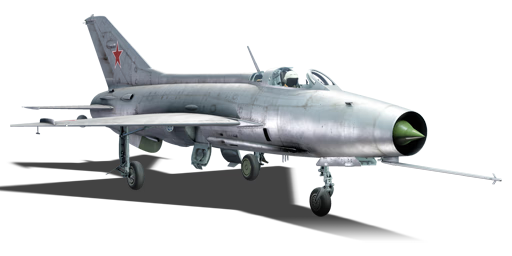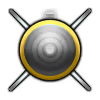



Only a few months before the introduction of the MiG-21F into Soviet service, the Second Taiwan Strait Crisis took place in 1958, where the AIM-9B Sidewinder missile employed by F-86 Sabres became the first instance of air-to-air missiles being used in combat. However, these early missiles had many flaws, and on September 28, 1958, one AIM-9B failed to detonate while striking a PLAAF MiG-17, becoming lodged in the rear fuselage and returning to base completely intact. This missile was quickly shipped back to the Soviet Union for analysis and backwards engineered into the K-13 missile system. A quick directive was issued to update existing (MiG-17 and MiG-19) and future aircraft projects (MiG-21) to use this new missile. An updated variant of the MiG-21F with one cannon removed to fit the required avionics for firing the K-13 missile would enter service shortly after as the MiG-21F-13.
The MiG-21F-13, introduced in Update 1.91 "Night Vision", is a complete departure in playstyle and doctrine from the aircraft that precede it in the tech tree. Unlike the MiG-15, 17, and 19 before it which rely on strong energy retention to win their dogfights at lower speeds due to high speed compression, the MiG-21F-13 is on the complete opposite of the spectrum, having abysmal energy retention and low speed manoeuvrability, and instead relying in its incredible AoA and instantaneous turning at higher speeds to best its opponents. The aircraft is best played conservatively, as its weak air-to-air missiles and singular, low velocity gun with a comically small ammo pool of 60 rounds does not allow for aggressive play. It is best to fly off away from the battlefield at first, letting the furballs form away from you before picking the most favourable engagements against distracted targets, utilizing hit-and-run tactics similar to the early F-104s of the same rank.
Pilots who can master the MiG-21F's less-forgiving flight characteristics and engagement doctrine can look forward to the MiG-21SMT, a major upgrade in weaponry and flight handling over the MiG-21F, while retaining the same basic playstyle. Also, players who truly enjoy the MiG-21 flight performance at this rank and are looking for a premium aircraft to aid in the research of the Soviet tech tree should consider the premium MiG-21S, a heavily upgraded MiG-21 at a slightly higher battle rating utilizing a stronger engine, more missiles, a radar, and a new cannon with a larger ammo pool.
flaps
flaps
flaps
brake
| Belt | Belt filling | Armor penetration (mm) at a distance: | |||||
|---|---|---|---|---|---|---|---|
| 10 m | 100 m | 500 m | 1000 m | 1500 m | 2000 m | ||
| HEF-I/AP-T/HEF-I/APHE | 48 | 47 | 40 | 33 | 27 | 22 | |
| APHE/AP-T/HEF-I | 48 | 47 | 40 | 33 | 27 | 22 | |
| APHE/HEF-I/HEF-I/HEFI-T | 37 | 36 | 31 | 25 | 21 | 17 | |
| Name | Weight | Slot | ||||||
|---|---|---|---|---|---|---|---|---|
| 75.3 kg |  |  | ||||||
| 235 kg |  |  | ||||||
| 16 × | 110.2 kg |  |  | |||||
| 250 kg |  |  | ||||||
| 478 kg |  |  | ||||||
| 342 kg |  |  | ||||||
| Drop tank (490 liters.) | 49 kg |  | ||||||












Flight performance | |
|---|---|
Survivability |
|---|
Weaponry | ||
|---|---|---|